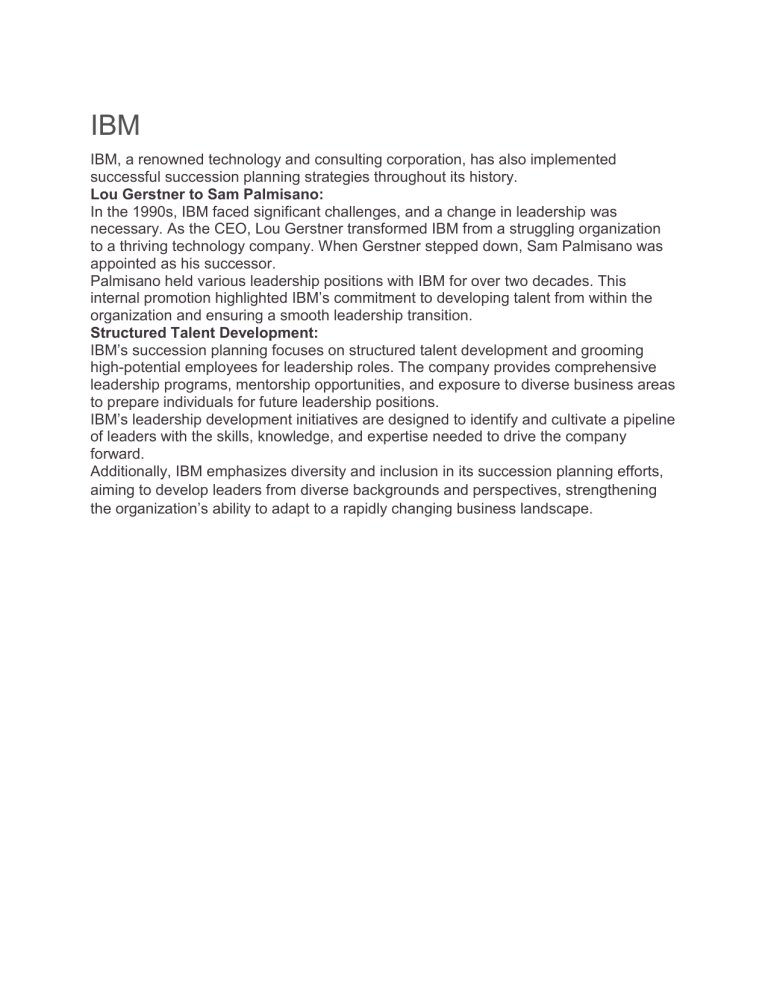
IBM IBM, a renowned technology and consulting corporation, has also implemented successful succession planning strategies throughout its history. Lou Gerstner to Sam Palmisano: In the 1990s, IBM faced significant challenges, and a change in leadership was necessary. As the CEO, Lou Gerstner transformed IBM from a struggling organization to a thriving technology company. When Gerstner stepped down, Sam Palmisano was appointed as his successor. Palmisano held various leadership positions with IBM for over two decades. This internal promotion highlighted IBM’s commitment to developing talent from within the organization and ensuring a smooth leadership transition. Structured Talent Development: IBM’s succession planning focuses on structured talent development and grooming high-potential employees for leadership roles. The company provides comprehensive leadership programs, mentorship opportunities, and exposure to diverse business areas to prepare individuals for future leadership positions. IBM’s leadership development initiatives are designed to identify and cultivate a pipeline of leaders with the skills, knowledge, and expertise needed to drive the company forward. Additionally, IBM emphasizes diversity and inclusion in its succession planning efforts, aiming to develop leaders from diverse backgrounds and perspectives, strengthening the organization’s ability to adapt to a rapidly changing business landscape.




